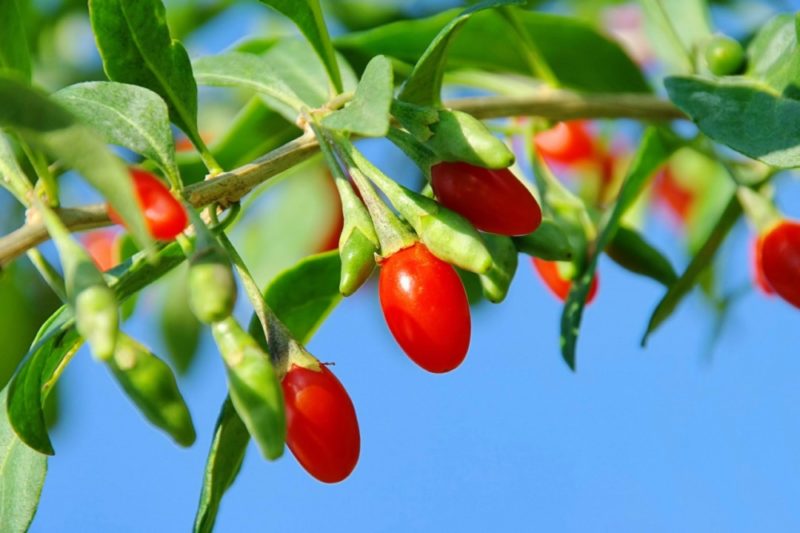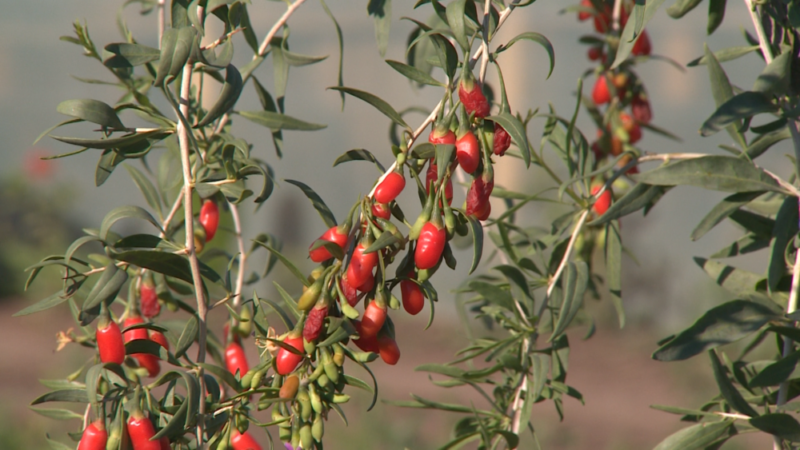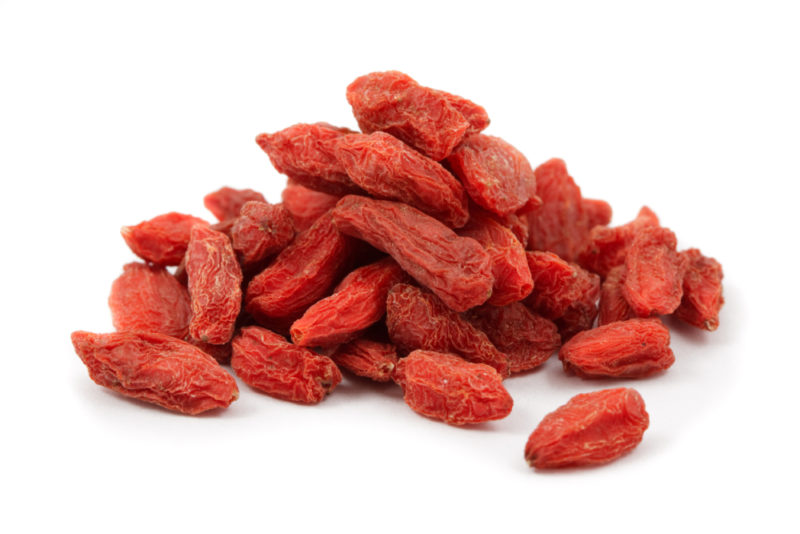Everyone has heard about the beneficial qualities of goji berries, but not many are aware that these are the fruits of the ordinary dereza plant. This medicinal product is not necessary to buy, the bush can be easily grown even in the middle zone of our country.
Material Content:
Characteristics and features of the goji berry
Goji berries are the fruits of two types of dereza - Chinese (Lycium chinense) and ordinary (Lycium barbarum), or barbaric. The plant belongs to the nightshade family. Chinese dereza is cultivated in Southeast Asia - the plant does not tolerate frost below 15 degrees. The area of common dereza is much wider - wild plants can be found both in China and the Far East. They are in Ukraine, Belarus and even in the middle lane.
In many habitats, it is called a wolf berry and is considered poisonous, which is not true. Sometimes it is called "Tibetan barberry" due to some external similarities, but these plants belong to different families.
- Dereza vulgaris is a perennial bush that discards leaves for the winter.
- Drooping shoots are a characteristic feature of this plant.
- Thin branches have small spines.
- The shape of the leaves is elongated, they are opposite.
- Bell-shaped fragrant flowers with a purple-pink color are located in the axils of the leaves singly or 2 to 3 units.
- The size of coral or bright red berries is up to 2 cm in cultivars, in wild representatives of the species they are smaller.
The common dereza has an extended flowering period (late spring - September) and fruiting (mid-summer - late autumn). The plant is early - in some varieties of berries you can pick it in the second year after planting.To tie them, you need to plant 2 or more dereza bushes nearby - it is cross-pollinated.
Varieties of ordinary dereza
If the wild forms of common dereza have rather small berries and bear them in small quantities, then hybrid varieties bred by selection differ favorably in both yield and fruit size.
- New Big is a hybrid variety from Poland. It has large berries - up to 2 cm weighing 1.2 g with a good taste. It grows very quickly, reaching a height of 3.5 m. Frost resistance, declared by the manufacturer - minus 30 degrees.
- Lhasa is from China. The variety is unpretentious, gives up to 4 kg of very large berries with a small bitterness.
- The Sugar Giant. The berries are very long, elongated, fiery orange in color with excellent taste.
- Sweet Amber. Bred 2 years ago by Chinese breeders. The berries are regular in size but non-standard yellow. Ripening, becoming almost transparent.
- "Superfruit" - the fruits are red or pink, medium-sized. Fruiting occurs in the third year.
- Sweet Lifeberry and Big Lifeberry are well-known European varieties with sweet fruits up to 1.5 cm in size. Bushes do not grow above 2 m.
- Dynamite and Firecracker are varieties from America. Unlike many others, they are self-fertile. The shape of bright red berries is close to round. Frost resistance is good.
- No.1 - number one, a novelty from Poland. Variety with the largest berries (up to 2.5 cm) and purple flowers. Unpretentious and frost-resistant.
Outdoor landing
It is difficult to find another plant that could surpass the ordinary dereza by unpretentiousness. The only indispensable condition for its existence is its location in the sun. She does not like the flooded areas, as well as the acidic soil. She puts up with everything else.
In the open ground in the south, ordinary dereza are planted in both spring and autumn. North only spring is suitable for this. A poorly rooted bush will not survive even small frosts.
When choosing a place, it should be borne in mind that the plant is quite aggressive and actively growing, therefore, keep a distance between bushes of about 2 m, despite the small size of the seedling.
Landing Algorithm:
- They dig a pit for goji with a size of 50x50x50, taking into account the fact that there will be a 10 cm drainage layer at the bottom.
- The planting mixture is prepared from a fertile top layer and humus, mixing them equally. For each hole you need 4 tbsp. l ash and 200 g of superphosphate.
- Planted on a knoll from the planting mixture, slightly deepening the root neck, about 2 cm.
- They watered a bucket of water, mulched the trunk circle, using humus, straw, peat as mulch.
- Pinch the top so that the seedling is better bush.
Basic care requirements
There are very few of them:
- single feeding at the time of flowering with complex fertilizer;
- watering during severe drought;
- spring pruning before budding, milking the creation of the necessary form of the bush and its thinning;
- protection against winter frosts.
Even varieties with good frost resistance in the first couple of years of life need to be covered
Plant propagation
Only wild wild dereza can be propagated by seeds. Under natural conditions, it dissipates. Hybrid forms during seed propagation will not repeat the parents.
But there is no reason for the disorder - numerous root offspring, as well as well-rooted cuttings, will make it easy to propagate dereza.
- Cuttings are carried out in late July, choosing lignified shoots for it.
- They are divided into parts 10 cm long.
- After the base of the shank was dipped in a root formation stimulator, it is planted in a mini plate with a slope to the south, deepening the lower kidney into the ground.
- Transplanted in a year.
Bushes are divided in early spring. If there are no root shoots, you can simply bend the already lignified twig to the soil and dig it after nailing, leaving the top above the ground. Next spring, a new bush can be separated from the uterine plant.
Pests and diseases
Dereza vulgaris practically does not get sick and is extremely rarely affected by pests. If this happens, help infusion of plant insecticide - wormwood.
Goji harvesting and storage
The fruiting of the ordinary dereza is stretched, so the berries are picked as they ripen, using waterproof gloves so that the aggressive juice does not irritate the skin. The easiest way is to spread the film under the bush and shake the berries on it. The fruits of the August harvest are considered the most valuable in composition.
Fresh berries are not consumed. They are dried without direct sunlight in a ventilated area.
As soon as the peel begins to lag behind the pulp, they are transferred to a hermetically sealed glass container. The expiration date of the dried raw materials is one year.
The harm and benefits of common dereza
Goji berries have long been used in Tibetan medicine.
Their healing properties are due to the unique composition:
- more than 20 minerals, including rare, but very necessary for the body germanium, selenium and iodine;
- 18 amino acids, 8 of which the human body does not synthesize;
- unsaturated fatty acids;
- vitamins - C, thiamine, riboflavin, beta-carotenoids, including xanthophyll, nicotinic acid, vitamin E;
- alimentary fiber;
- bioflavonoids.
Goji berries will be useful in many cases.
With their help, you can:
- strengthen the body and raise the general tone;
- improve the condition of blood vessels;
- relieve headache and dizziness;
- improve eyesight;
- normalize the condition of the lungs and kidneys;
- prevent fatty hepatosis;
- reduce sugar in diabetes;
- slow down the aging of the body;
- improve memory;
- relieve stress;
- normalize hormonal status;
- increase libido;
- to cure infertility.
Berries of ordinary dereza are able to burn fats that have already accumulated in the body and prevent new ones from being stored, therefore they are excellent for weight loss. In addition, they help control appetite.
If you take goji berries and antihypertensive drugs at the same time, the effect of the latter is enhanced.
In folk medicine, not only ordinary dereza berries are used, but also bark and leaves. Dried bark is used in the form of decoctions. She treats cough and fever, reduces the level of bad cholesterol, and is used as a diuretic and laxative.
Leaves serve as raw materials for the preparation of invigorating teas.
Hydrocyanic acid is part of goji berries, so you should not abuse them. The norm for admission per day is 2 tbsp. spoons, for children after 3 years - 2 times less.
You should not eat these berries at all in such conditions:
- in the initial stage of viral diseases, when the temperature is high;
- with hypotension;
- if the sensitive digestive tract has reacted to their intake of diarrhea;
- with allergies;
- if diabetes is severe.
During lactation and pregnancy, berries are taken in smaller quantities and with extreme caution after talking with your doctor.
Do not eat berries and a decoction of them in the afternoon, especially for those who suffer from insomnia - it can intensify.
Goji berries can help in many cases, but only if used correctly and given contraindications.

















